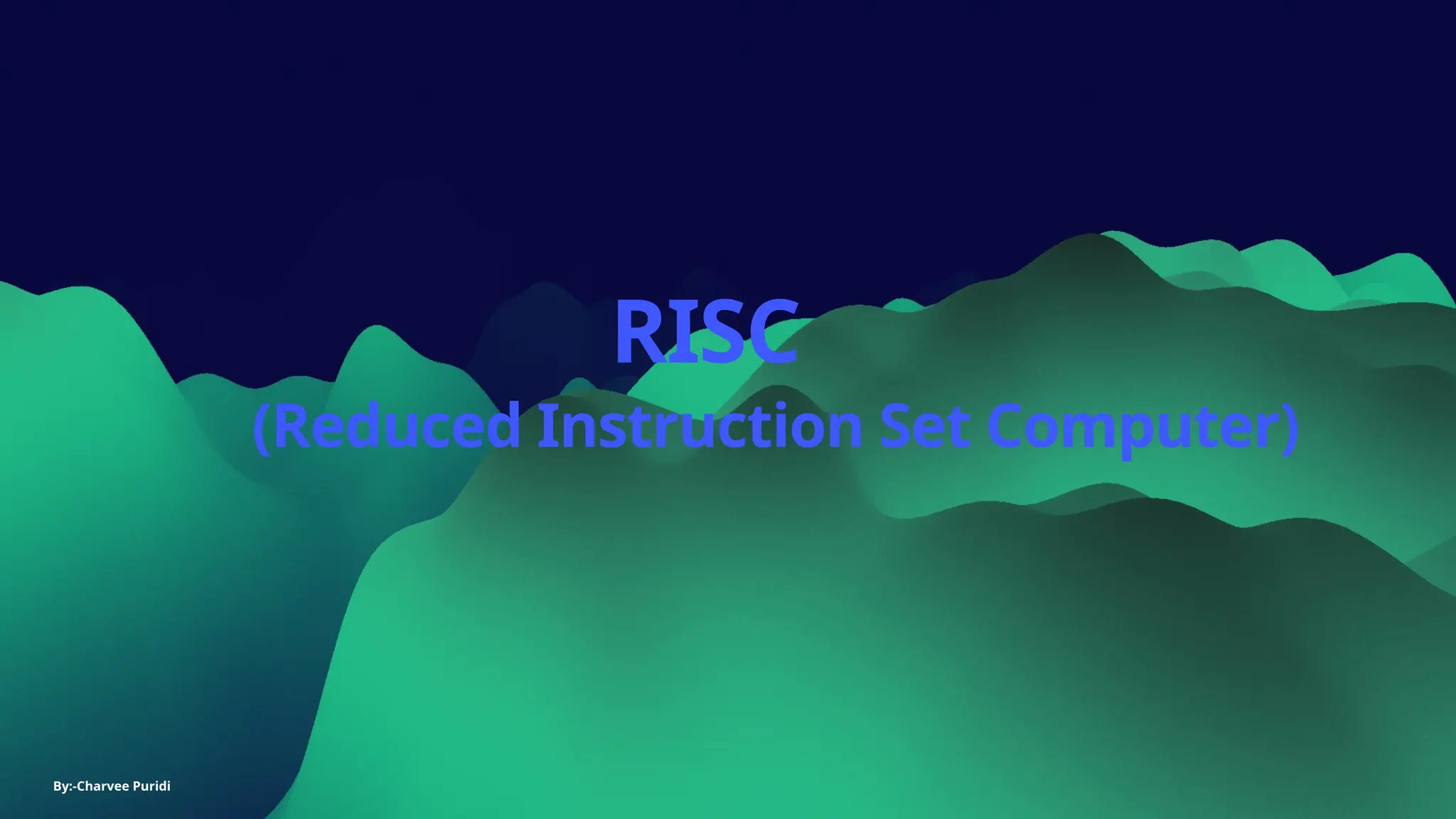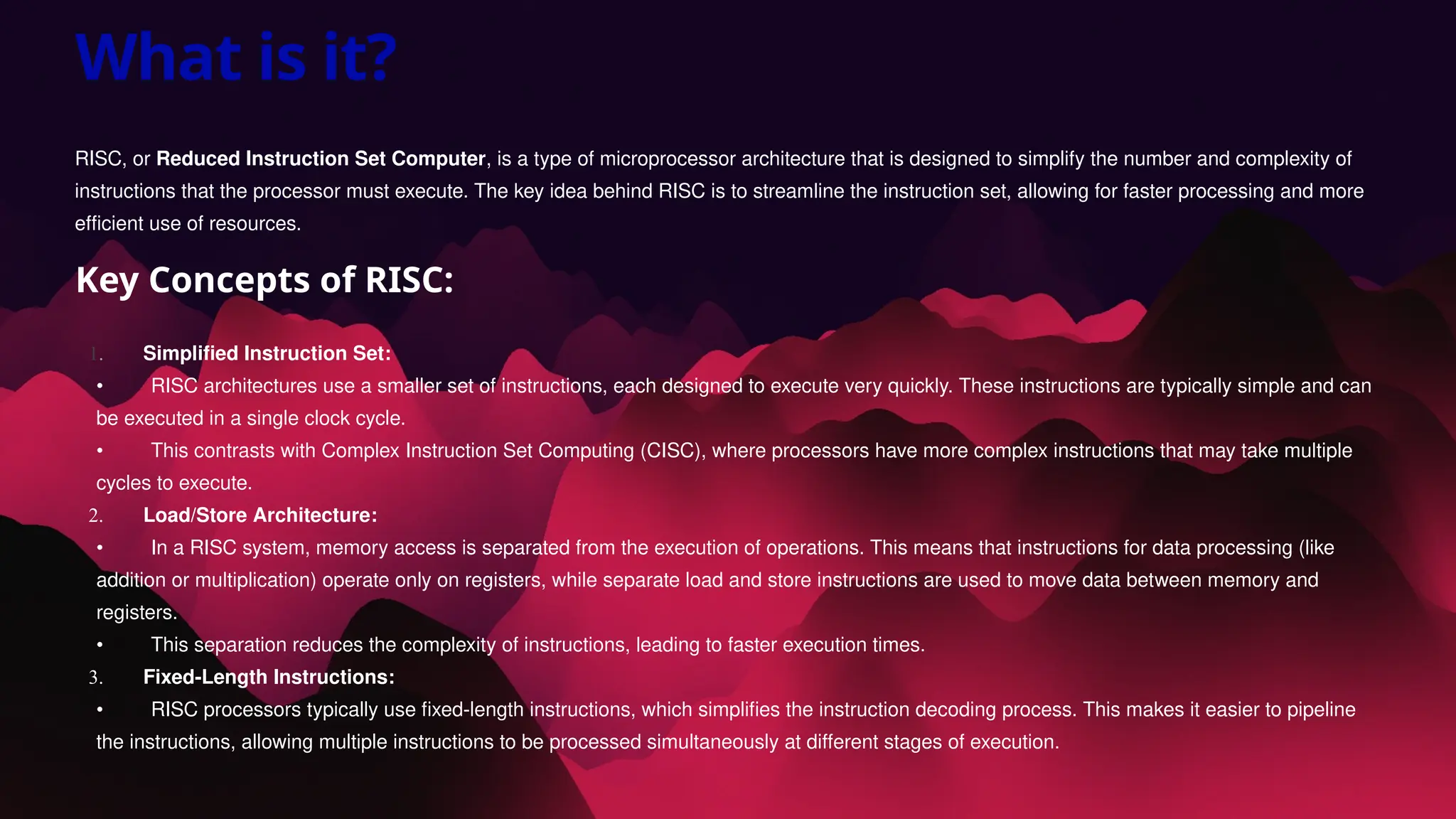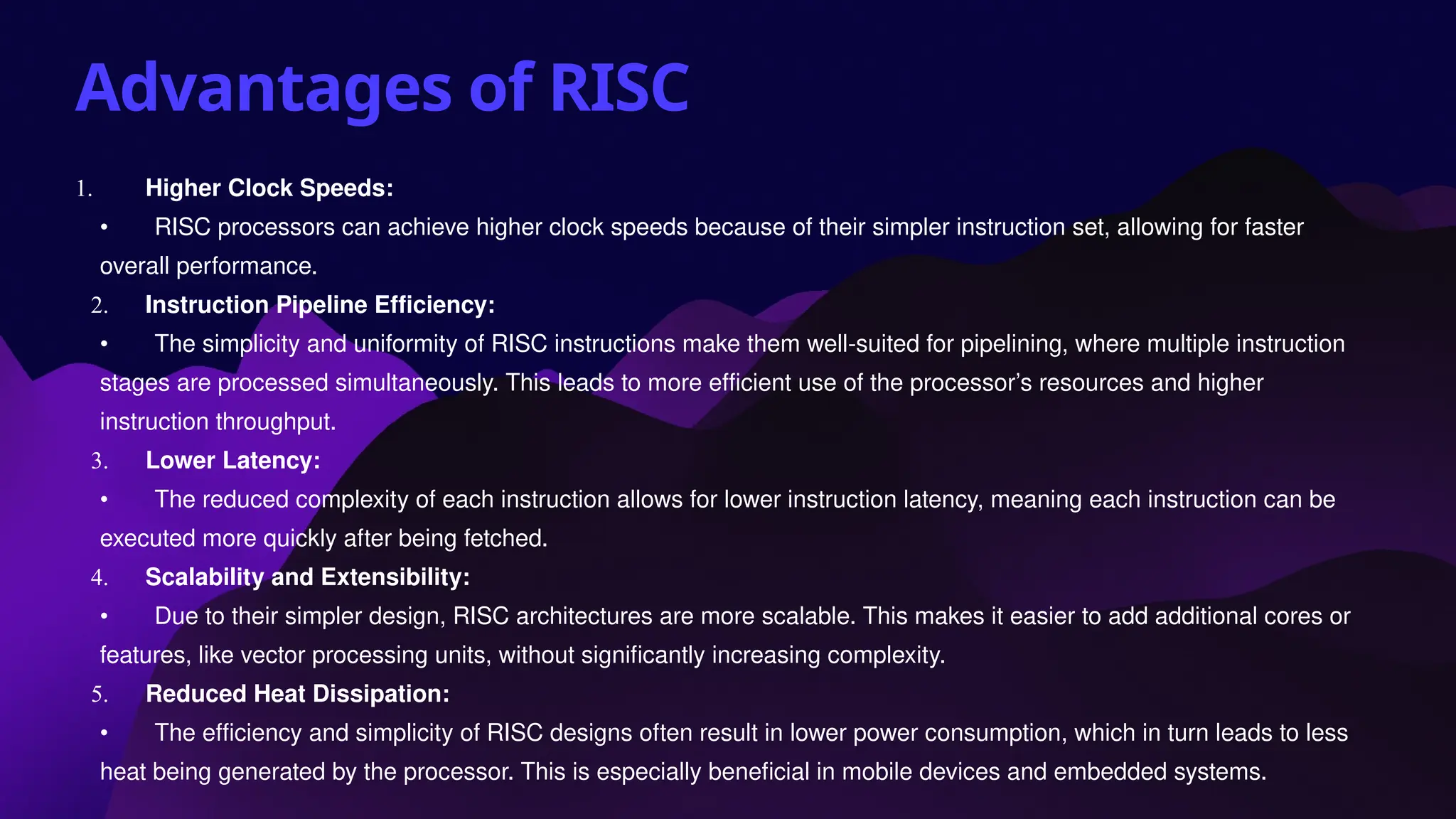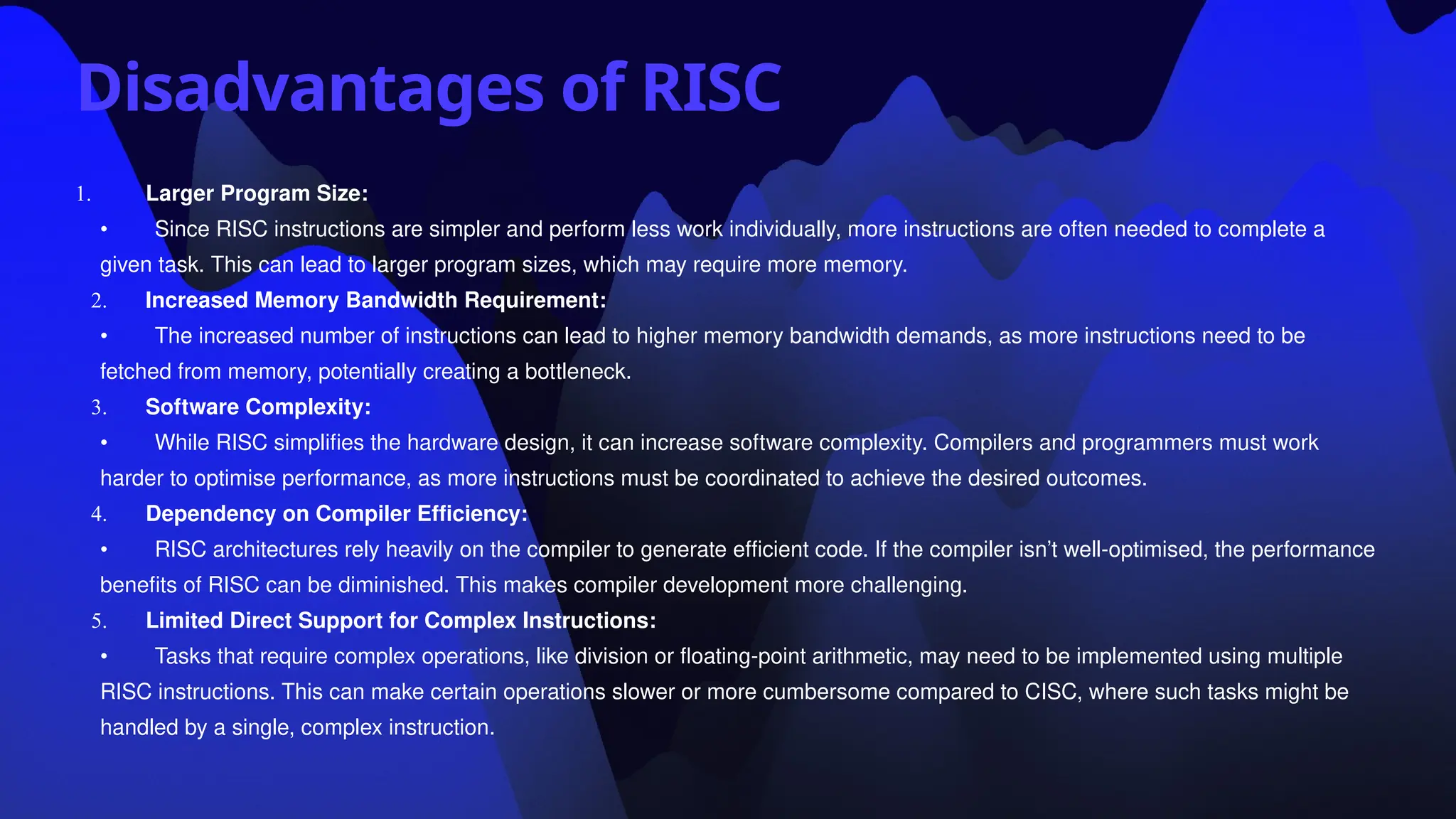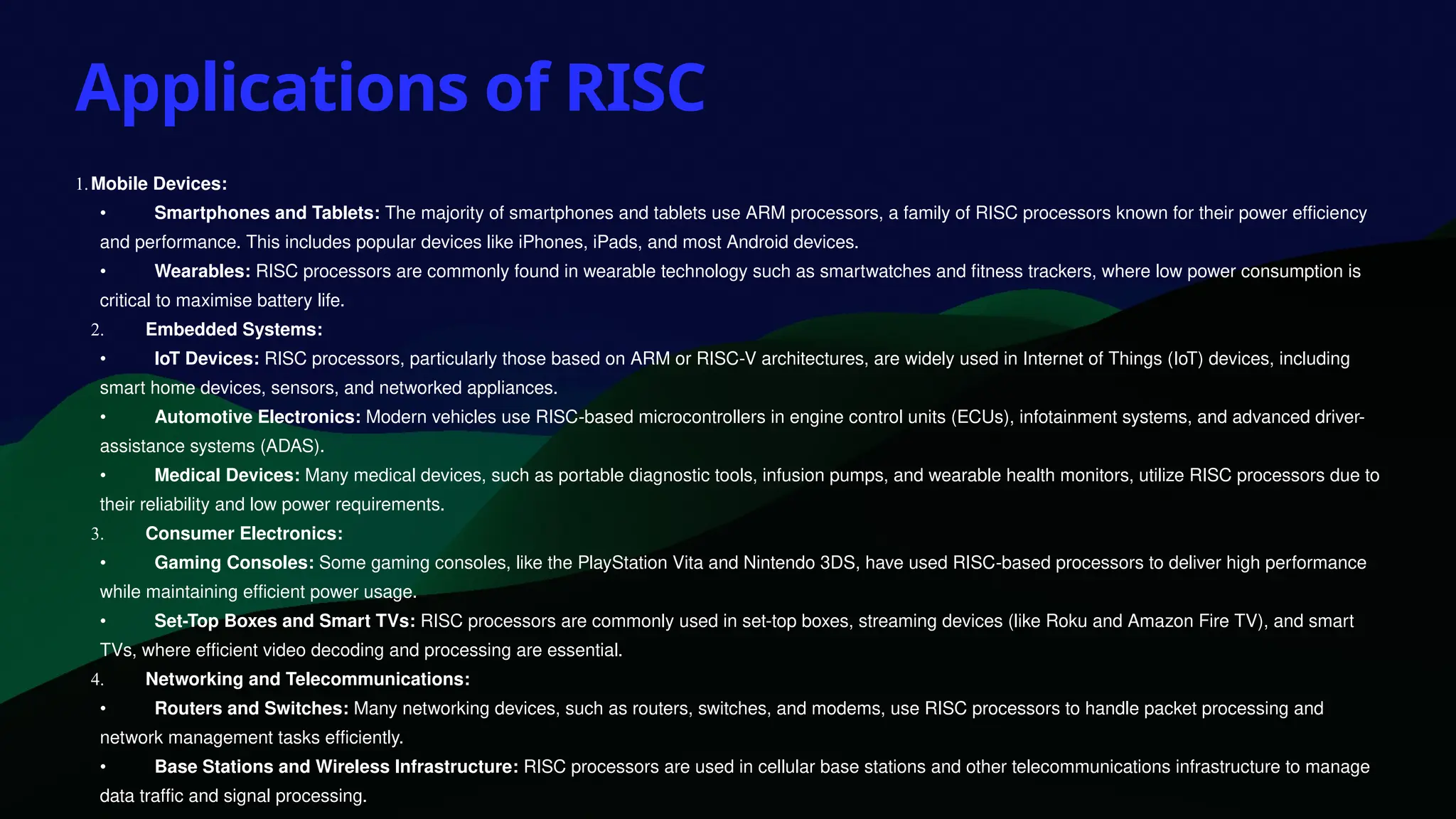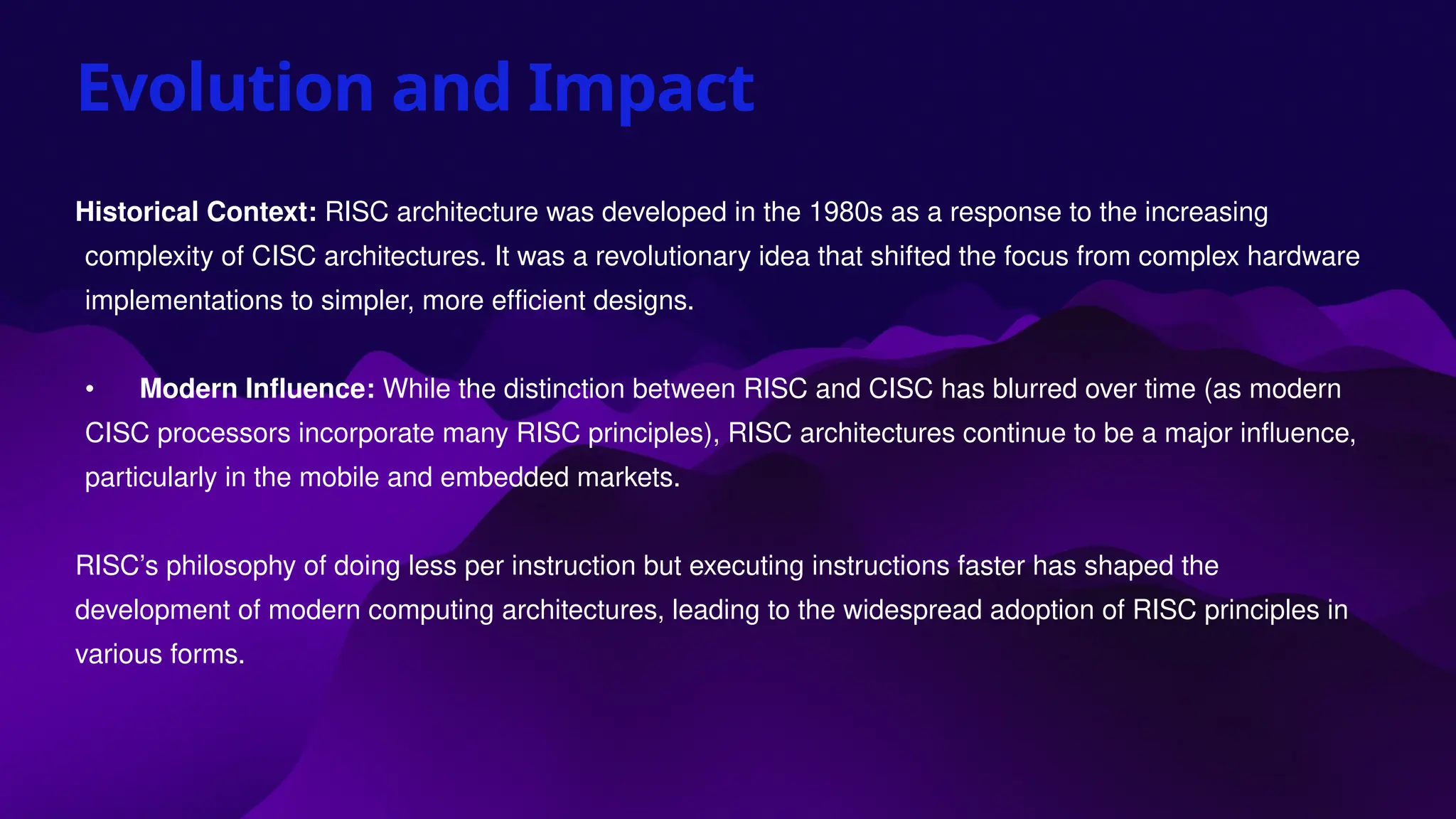RISC, or reduced instruction set computer, is a microprocessor architecture that simplifies instructions for faster processing and efficient resource use, featuring a simplified instruction set, load/store architecture, and fixed-length instructions. While RISC offers advantages like higher clock speeds, improved pipelining, and lower power consumption, it may also result in larger program sizes and increased memory bandwidth demands. Common applications of RISC include mobile devices, embedded systems, consumer electronics, and networking equipment.
